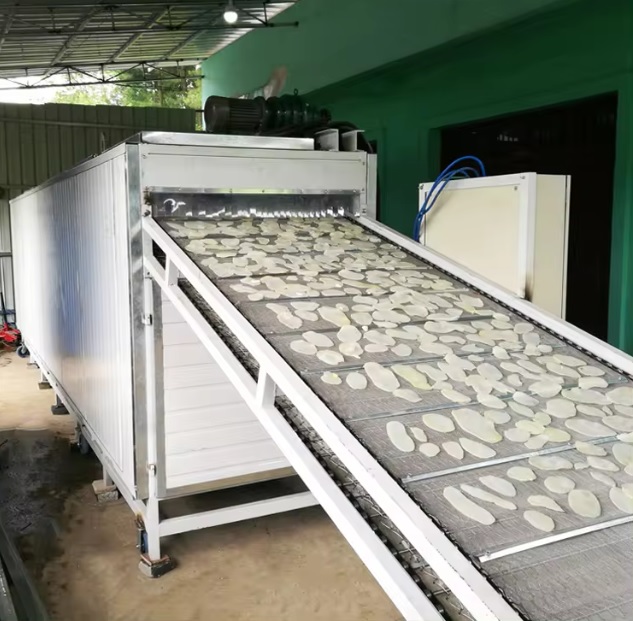Ginger is a perennial creeping plant, with thick tuberous rhizome, manufacturing and erect stem 30-100cm tall. It’s propagated from rhizome cuttings, planted on rich, well-drained soil. The top five ginger producing countries in the world are India, China, Nepal, Nigeria, and Thailand. India, with a production of 7.03 billion, leads in the world ginger cultivation. The subsequent 2 countries are `China and Nepal, with the production of 4.25 billion and 2.55 billion, respectively. The first known constituents of ginger root include starch, gingerols, zingibain, oleoresins, essential oil, mucilage, and protein. The dried type of ginger, ginger powder, is utilized as a spice. And its extracts, ginger oil, are utilized in beverages and confectionery.
- Advantages of Ginger Dehydration
Enhance ginger’s value
Fresh or raw ginger promotes sweating and dispersing exterior cold. While dried ginger is more effective in warming spleen and stomach and expelling interior cold. Therefore, dried ginger can help relieve indigestion, gas pains, reduce nausea and stomach cramping.
More cost-effective
Dried ginger is more concentrated in its chemical composition than fresh ginger. Dried ginger can be stored easily for a long time, the process is, therefore, effective because it lowers the cost of packaging, storing and transportation by reducing both weight and volume of the final product.
Wide application
Dried gingers can be processed into different forms like piece, powder, starch, and all of these forms can be applied in many industries.
- Dried ginger pieces not only have the function of expelling interior cold and dampness but also reduces the bitter feeling when your mouth becomes dried. So it is a common ingredient of cold pills.
- Ginger powder is normally used in seasoning and pickling vegetables, baking food, flavoring candies, or a beverage such as ginger tea.
- Dried ginger powder can be further processed into starch, which is isolated from ginger rhizomes. The increased requirements for starches in different applications, such as functional and healthier food, or applications in pharmaceuticals have thus forced a steady development of new starch types.
- Dried ginger slice can also be steam distilled as ginger oil or eleoresin, which have the function of anti-oxidation and anti-bacterial. The yield of oil from dried ginger rhizomes is between 1.5% to 3.0%. The remaining rhizome powder contains about 50% starch and can be used for animal feed.
- Hot Air Circulation Drying Technology
The hot air circulation drying technology used in ginger drying processing is able to ensure a homogeneous temperature, making ginger heated evenly to get a uniform color. This drying oven with automatic temperature control function works smoothly to ensure the end product’s quality.

During drying process, the fresh gingers are usually processed utilizing Hot-Air Circulation dryer, that may be a tray dryer whose heating source is provided by electricity, steam, hot water or far infrared ray, the hot air is blown into the drying oven by the fan and most of the hot air circulate continuously in the drying oven, drying gingers with this method is a cost-efficient long-term food storage solution. When drying for many hours, store it in plastic zip lock bags or airtight containers. This dry fresh ginger can store in a moisture free atmosphere for over a year.
In modern India, ginger is widely cultivated and marketed as a dried spice, and India incorporates a predominant position in ginger production and exports. Indian dry gingers are typically exported to the America, UK, and also the Middle East from Cochin, Calicut and different places on Malabar Coast, forming a considerable portion of ginger supply in worldwide, and is reckoned in the London market as next in value to the more carefully prepared, and consequently higher looking, Jamaica ginger. Since the ordinarily utilized method in India in the preparation of ginger for the market is crude and imperfect, which means the drying technology is required in India, like the practical Hot-Air Drying method and equipment. Ginger is served as an expensive appetizer in cooking and an efficient drug in local, the clientele in Indian market ranges from various corporations to numerous retailers. Besides dried products, different forms like oils, oleoresins, and fresh ginger in brine, pickles, candies, and syrups, powders are consumed in local.
